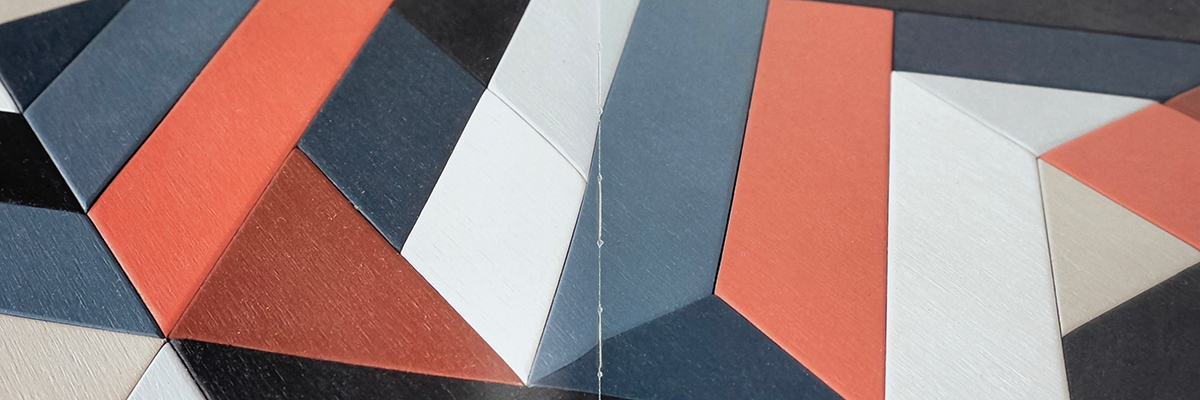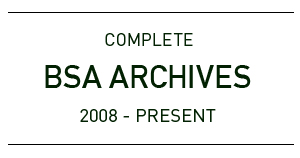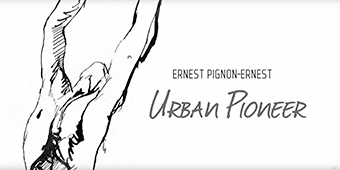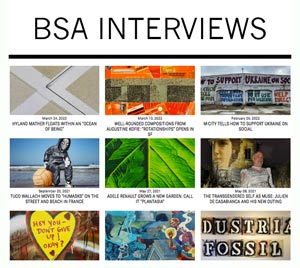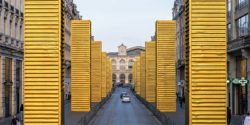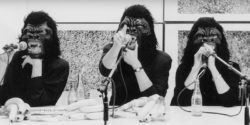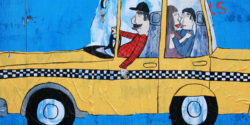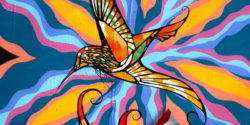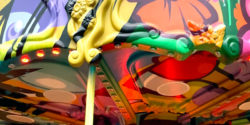Color-blocked basketball courts appreciated from a plane, cheerful abstract murals for restaurants, hotels and cafes, and massive wood collages comprised of assembled pieces that are each finished before joining. What do these expressions of artist Scott Albrecht have to do with one another? If you study the patterns, in time, you will see.
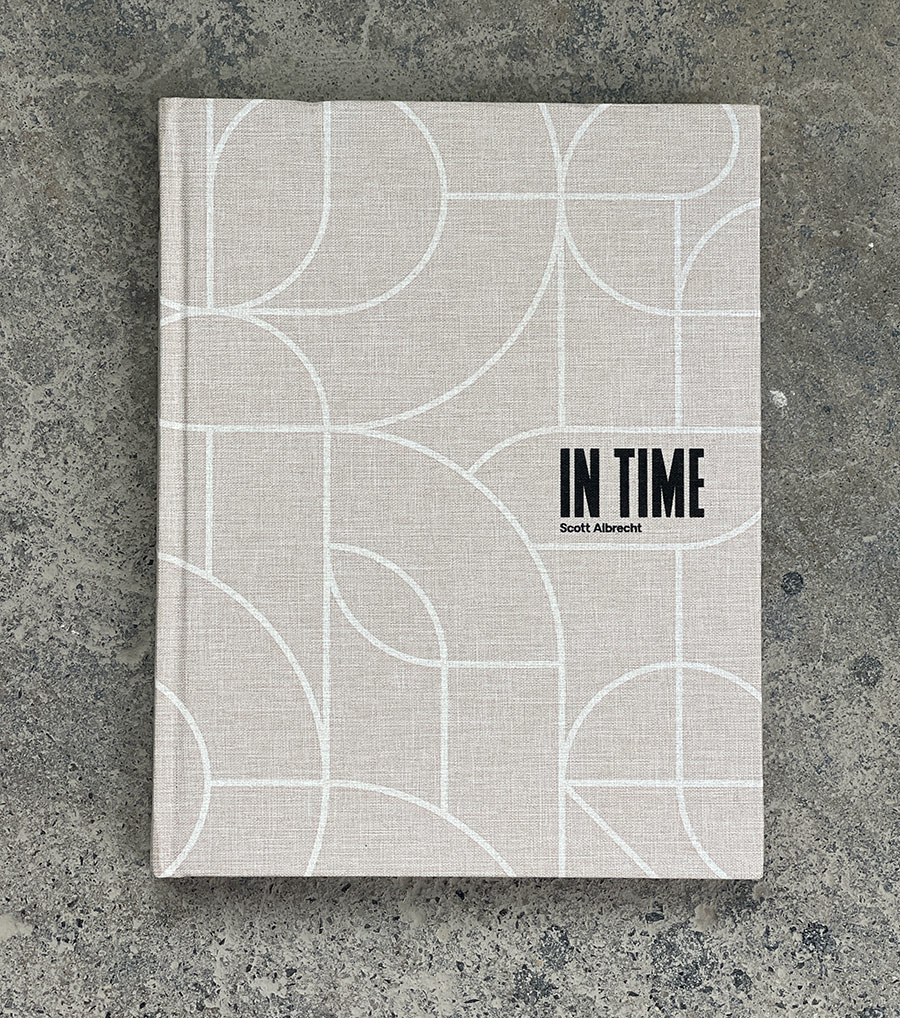
A handsome cloth-covered hardcopy of works by the Gowanus, Brooklyn-based public/studio artist presents a selection of works from 2017-21 that have a rational color theory, smoothly dynamic geometries, and a soothing certitude in their complexity. Spotlighting public art projects, studio processes, exhibitions in New York and LA, and his residency at Hyland Mather’s place in Portugal, the collection is refined yet human.

In his description of his work, Albrecht is focused on the process as much as the product. “Most of my works are made up of a collection of pieces that go through a series of steps before they’re
assembled. Any single step per individual piece doesn’t take long–laminating, sanding, painting-but if a work has a couple of hundred pieces, and all those pieces go through the same process, time feels less linear and more compounded as I work through the steps.”
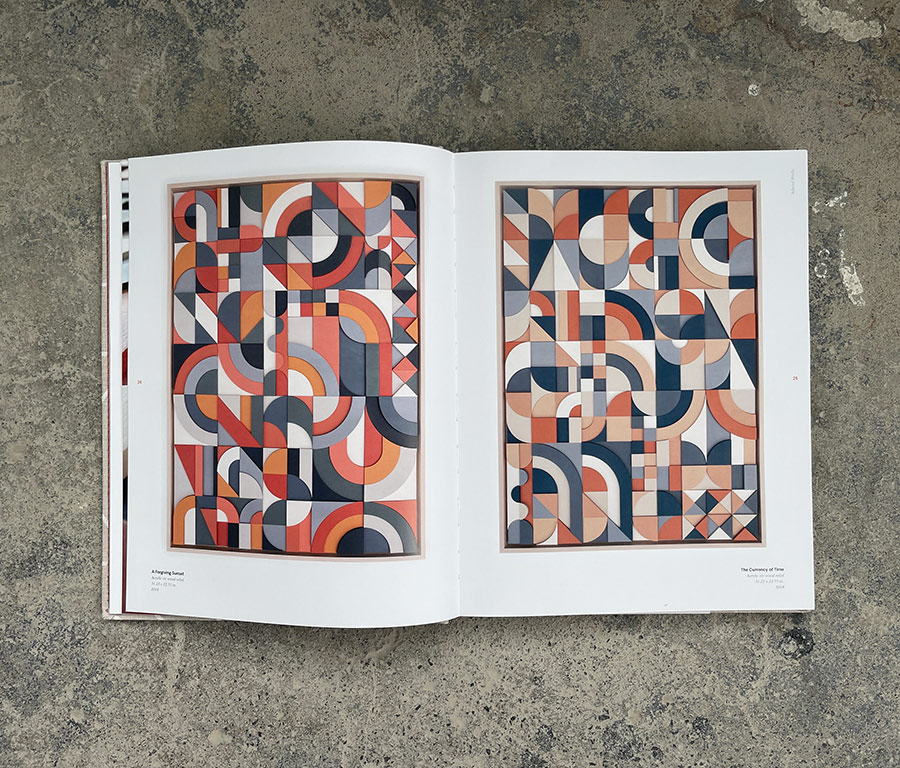
Together these steps appear to be a decoding mechanism that is necessary to understand fully. “While the work itself may be speaking to a single idea, it’s made up of a collection of individual elements coming together to form the whole,” he says. “I often equate these individual pieces to the micro-experiences we encounter that inform our relationship to an understanding.”
First encounters with Albrect’s work are gripping and calming – a deliberate collection of shapes and hues arranged in a way that is not readily apparent. It’s all about pattern recognition, says David Pescovitz, a research director at a think tank and co-editor of a tech/culture Web magazine. He writes the introduction to the book and tells us that the works are meant to be meditative, a brain exercise and visual riddle that, once solved, is rational.
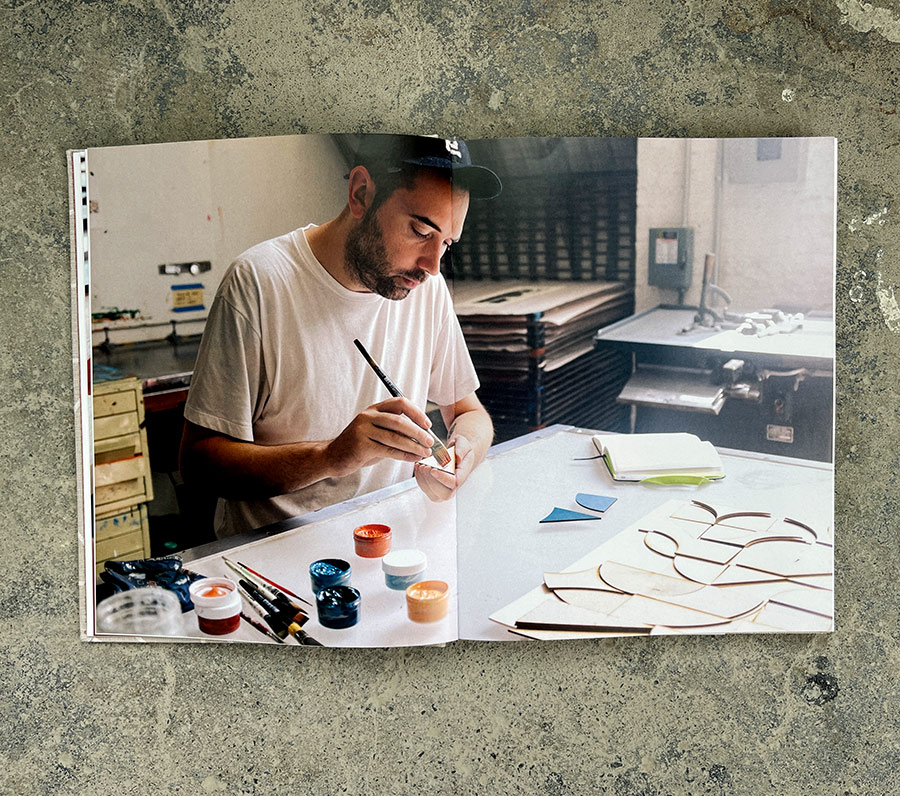
“We’re so practiced at seeking patterns – searching for structure in the flood of signals coming our way, connecting the dots, trying to make sense of, well, everything–that we’re usually not aware we’re doing it.” Sighting neuroscientists and various peer review journals Pescovitz makes his case, and you are inclined to go back through the pages and let your eyes glide, parry, sense, and decode the patterns’ greater logic.
In time, you will.
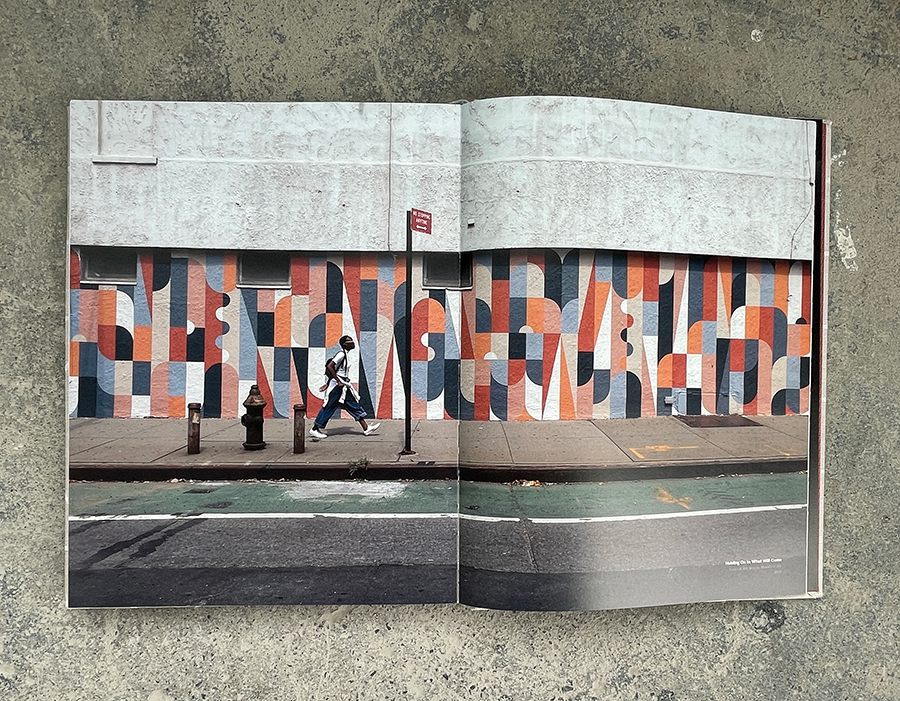
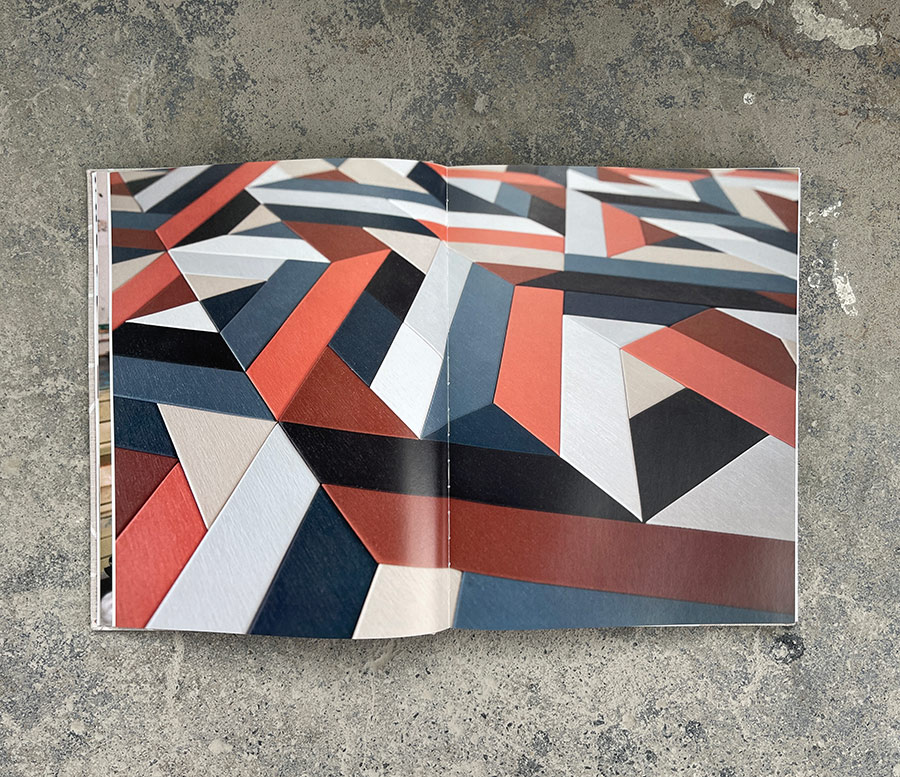
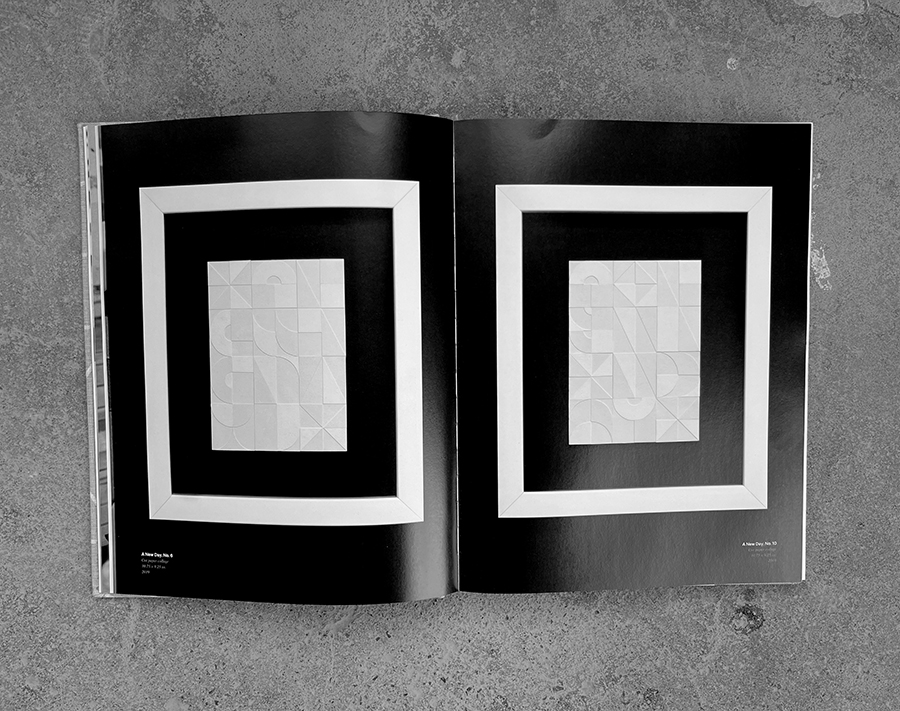
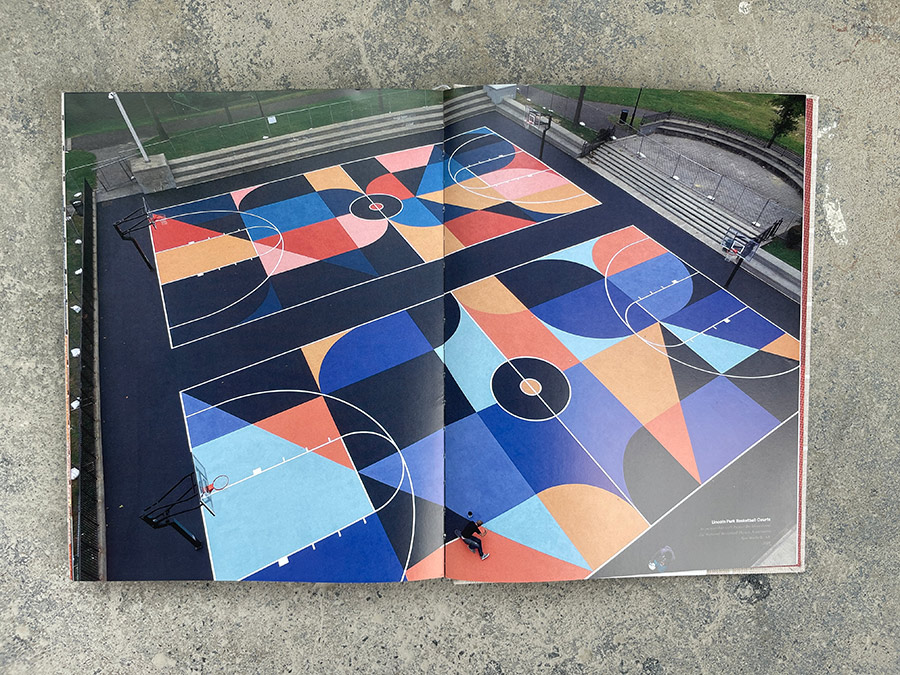
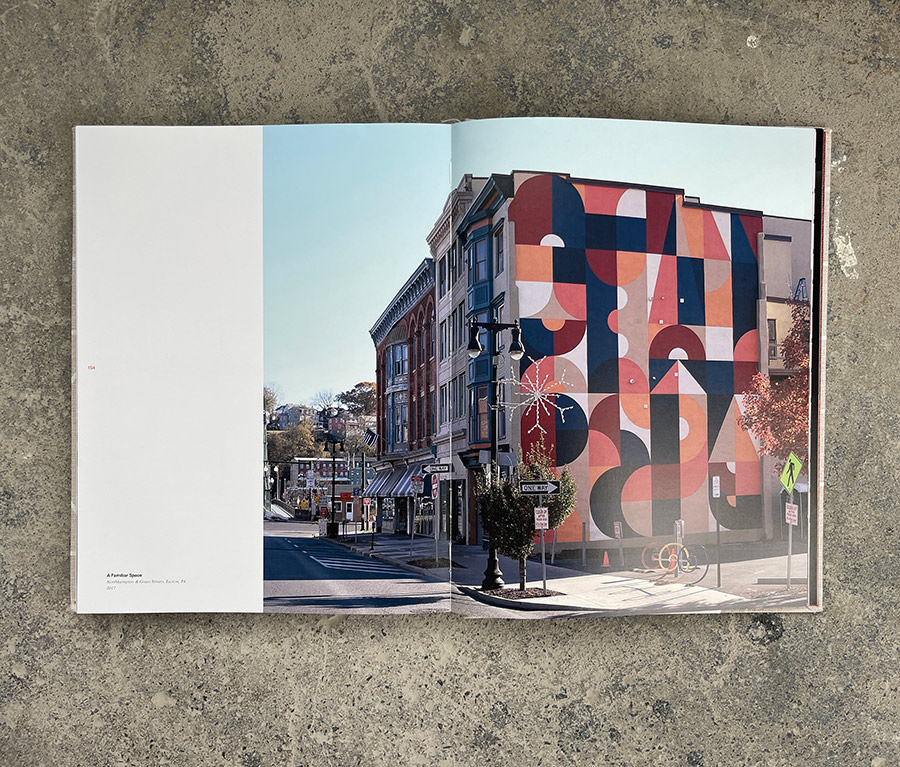
Scott Albrecht: In Time. Click HERE for information about purchasing this book.
Other Articles You May Like from BSA:
Strøk is in Brooklyn briefly and he had time to spray out a brand new 8 layer stencil on a doorway here before traveling a bit to see more of the Eastern Seaboard with his girlfriend. We found him thi...
Irish street artist Asbestos likes peeking out, just his inquisitive orbs taking you in from a safe space. “We all wear masks every second of the day.” Naturally that’s not hard to do since much of t...
If you ever wonder who the government actually is, take a look under the highway of Toronto. You’ll see there that it is the people, as in We The People, who are holding up the roads in Underpass Park...
“This one goes out to the whole LGBTQ community!” says Street Artist Remi Rough as he finishes his first of two brightly abstract and geometric installations here in NYC over the last couple of days....
Welcome to BSA Images of the Week! New York is coming alive as spring approaches - and there is a lot of new graffiti and street art suddenly. We are also awash in news that keeps everyone jumpi...
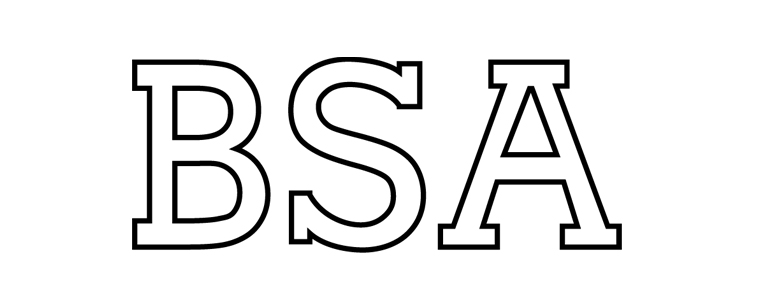 BROOKLYN STREET ART LOVES YOU MORE EVERY DAY
BROOKLYN STREET ART LOVES YOU MORE EVERY DAY